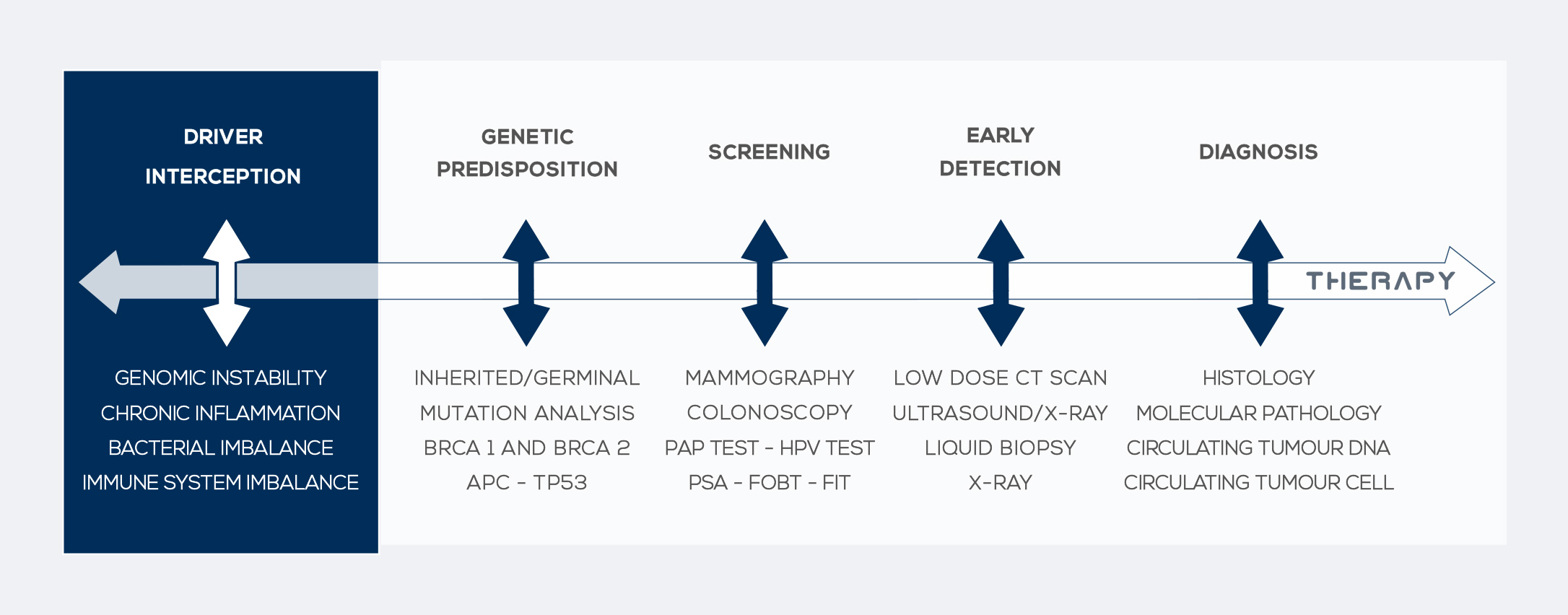Today it is possible to switch the focus from early cancer detection and generic external risk factors reduction to actionable cancer driver interception. In fact, cancer arises from a process of transformation of normal cells into cancer cells lasting years or decades; during this stage (the so-called prodromal phase) people are apparently healthy and totally asymptomatic, but several factors are actively driving this transformation process. And now we know that just like we can monitor hypertension, hypertriglyceridemia, obesity, and other risk factors that drive CVD development, cancer drivers are measurable too.

Once intercepted, actionable cancer drivers can be monitored, giving people a feedback not only on the progression of the cancer prodromal phase, but also on the effectiveness of the strategies (such as cancer chemoprevention, that is the use of drugs, vitamins or other agents to reduce the risk of cancer development) put in place to counteract their presence – just as in the case of people undergoing regular cholesterol test to evaluate cholesterol-reducing therapy efficiency.
The leading physiological condition that drives cancer development is genomic instability. We all know that genes are strongly involved in determining cancer risk. They are responsible for the hereditary susceptibility to the development of the disease, but not only. In fact, several cancer risk factors are associated with the build up of mutations promoting the transformation of normal cells into cancer cells. Cells that accumulate such mutations are genetically unstable, and genomic instability is a feature of the cancer prodromal phase.

